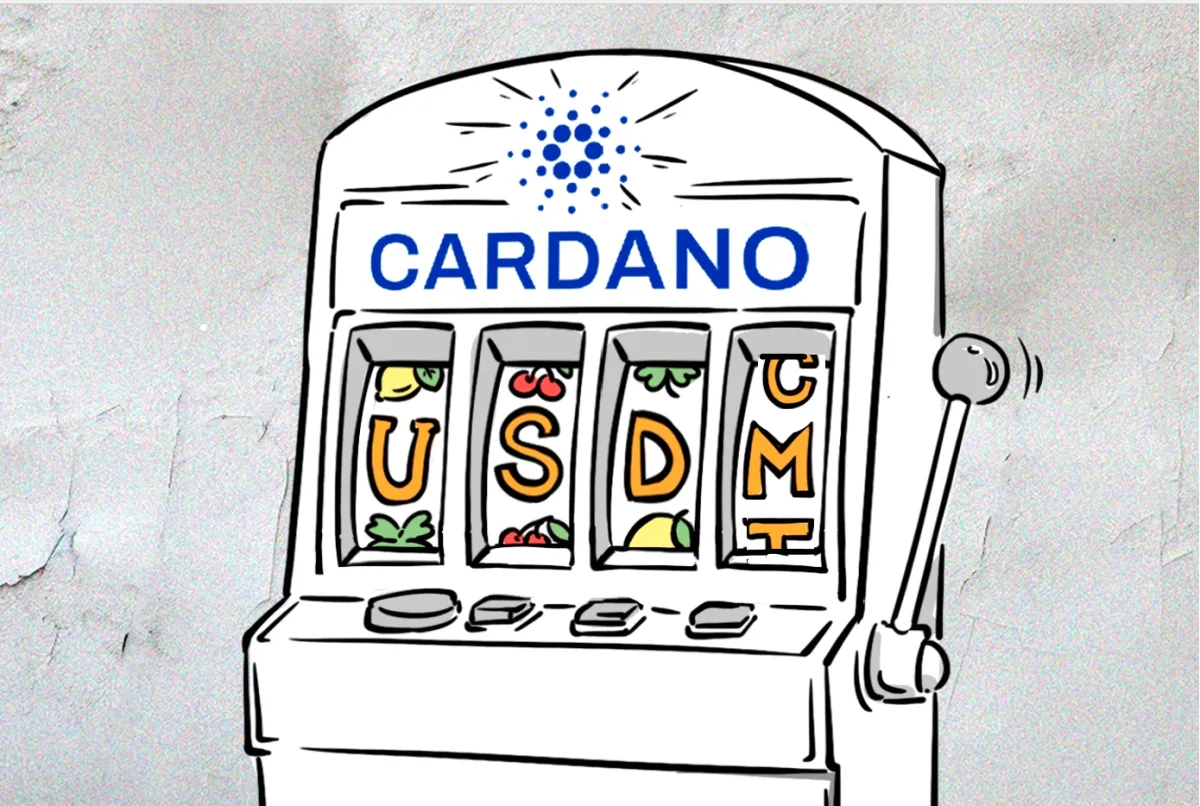
Cardano's DeFi ecosystem took a major step forward on March 17 with the launch of USDM, the network's first fiat-backed stablecoin. Issued by Mehen Finance, USDM promises greater price stability then existing Cardano-native stablecoins like DJED and iUSD, which rely on algorithmic or synthetic mechanisms.
The arrival of USDM marks the culmination of a long journey for Mehen. Initially planned for early 2023, the project faced setbacks due to the closures of crypto-friendly banks and a shift in focus by Mehen's initial banking partner, Cross River, who suddenly teamed up with Circle, the issuer of USD Coin (USDC). “Once they had them, they didn’t care about us anymore,” Mehen founder Matthew Plomin said. “[It was a] kick in the nuts delay.”
#CardanoCommunity,$USDM IS HERE!
— $USDM on Cardano (@MehenOfficial) March 17, 2024
policyID - c48cbb3d5e57ed56e276bc45f99ab39abe94e6cd7ac39fb402da47ad
assetName - 0014df105553444d pic.twitter.com/gnkh4NikDS
Unlike algorithmic or synthetic stablecoins, USDM draws its stability from a reserve of U.S. dollars held by Mehen in government-only money market mutual funds at Fidelity and Western Asset Management. Like Tether (USDT) and USDC, this reserve system aims to maintain a 1:1 peg between USDM and the U.S. dollar.
In theory, users can seamlessly mint new USDM by depositing U.S. dollars with Mehen at a 1:1 ratio and redeeming their USDM holdings for U.S. dollars at any time. This direct peg offers several advantages. Firstly, it reduces the volatility often associated with algorithmic and synthetic stablecoins. Secondly, USDM could potentially attract new users and projects to the Cardano ecosystem who prefer the perceived security of fiat-backed assets.
According to Mehen, transparency is one of the core principles of USDM. The reserve backing the stablecoin is reportedly reflected directly on-chain through Charli3, a decentralized oracle designed for the Cardano network. This integration allows real-time verification of the U.S. dollar reserves supposedly backing the USDM in circulation. Plomin also highlighted a unique feature in USDM that prevents excess minting, as reported by Cointelegraph. Unlike USDC and USDT, USDM cannot be frozen, making it a superior stablecoin, according to Cardano Curation founder Caleb Montiel.
The inability to freeze USDM directly on the Cardano blockchain has raised concerns among community members who worry that regulators could instead freeze the bank accounts holding USDM's reserve funds, potentially disrupting the stablecoin's 1:1 peg to the U.S. dollar. This concern is amplified by the fact that Mehen is headquartered in New York, a state with a history of strict regulations and enforcement actions against major cryptocurrency players. However, Plomin stressed the USDM reserve is held in secure, government-backed money market mutual funds at Fidelity and Western Asset Management. These funds differ from traditional bank accounts, potentially mitigating the risk of direct freeze.

The initial launch on March 17 was limited to institutional investors. A public rollout for retail users is expected in April 2024, with licensing already obtained in 17 U.S. states and more planned. Wider accessibility will be crucial for USDM's long-term adoption within the Cardano community.
One potential challenge USDM faces is competition from existing Cardano-native stablecoins like DJED and iUSD. While USDM offers the perceived security of a fiat-backed asset, algorithmic and synthetic stablecoins can boast features like built-in lending functionalities. The relative ease of integrating these features into algorithmic and synthetic models might pose a challenge for USDM, especially if it struggles to gain initial traction.
The community has welcomed USDM positively. In an article by crypto-blogger Marco_112358, he acknowledges the stablecoin's potential to stabilize the DeFi ecosystem but identifies vulnerabilities in maintaining its 1:1 USD peg. He suggested liquidity issues and traditional banking delays could also cause temporary price fluctuations and external factors like bank failures or regulations could impact the underlying reserves backing USDM. Despite these concerns, Marco views USDM favorably due to Mehen's Financial Crimes Enforcement Network (FinCEN) registration and the use of secure government-backed money market funds. The article looks at a potential launch on Minswap, a multi-pool DEX on Cardano, which was put up for a community vote.
USDM's arrival positions Cardano as a more effective competitor to DeFi ecosystems like Ethereum and Solana, which boast a wider variety of fiat-backed stablecoins. USDM's success will hinge on its ability to achieve widespread adoption among Cardano users, developers, and decentralized applications (dApps).
Even if there were $USDC and $USDT on #Cardano, I would be loyal to $USDM because it was the first USD-backed stablecoin in our ecosystem and the Mehen team deserves it.@MehenOfficial @circle @Tether_to
— Cardano YOD₳ (@JaromirTesar) March 17, 2024

